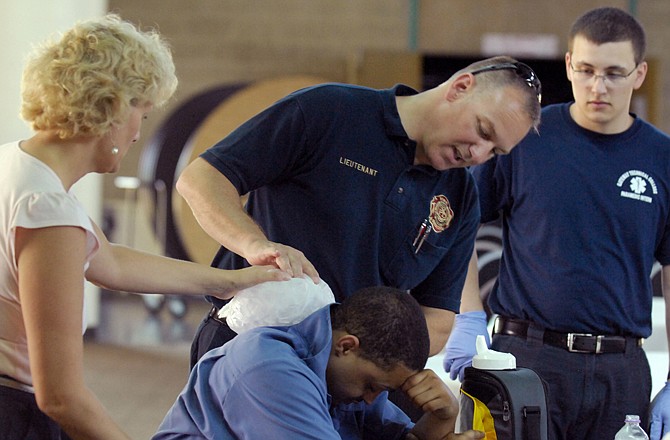WASHINGTON (AP) - The killer lurking in the shadows of the current heat wave may be hot nights.
"Everybody kind of gets fixated on how hot it gets: "Did we break 100?'" observed Illinois state climatologist Jim Angel. "But the nighttime temperatures can be just as important."
For folks without air conditioning, a nighttime respite from the worst of the heat gives the body a vital chance to recover from the stresses of the day.
But while the current heat wave has recorded 12 all-time daily highs so far this month, it also has registered 98 all-time overnight highs, the National Oceanic and Atmospheric Administration reported at a briefing Thursday.
And that's just all-time highs.
When it comes to a record high for a particular date, 1,279 locations have tied or broken daytime records this month while 3,128 night time highs have been tied or broken.
For example, on Wednesday Eppley Airfield in Omaha, Neb., had an overnight low of 82 degrees. That was a full 5 degrees warmer than the previous warmest overnight on that date, set in 2002.
Litchfield, Minn., also posted an overnight low of 82, besting a warm nighttime record for that date of 74 degrees set in 1964, and the overnight low of 82 at Lambert Field in St. Louis edged out the 1998 mark by 1 degree.
When temperatures overnight do not cool to levels that provide relief, it increases the stress on people without air conditioning, on livestock and on crops, said Deke Arndt, chief of the Climate Modeling Branch at NOAA's National Climatic Data Center.
In general, both daytime and nighttime temperature increases "are consistent with what we would expect in a greenhouse-warmed world," he added.
High overnight readings also increase energy consumption as air conditioning units run deeper into the night and start earlier in the morning, he said.
This problem was a major factor in the 1995 heat wave that struck Chicago, claiming more than 700 lives, Angel pointed out in a telephone interview.
There were reports of elderly people who died in apartments because they couldn't afford to run their air conditioning or were afraid to open windows because of the fear of crime, he noted.
Chicago has since improved its response to heat waves, adding more cooling centers, sending people out to check on the elderly and asking neighbors to assist one another, he said.
Angel said he has not seen a lot of reports of deaths so far this year, but he added that sometimes finding people overcome by heat takes a while and the fatalities are not reported until later.
And unlike people, livestock and crops have little recourse from the heat. July is a sensitive time for corn, Angel said, possibly reducing its yield because of the heat.
In its briefing, NOAA also reported that last month was the seventh warmest June on record and so far 2011 is the 11th warmest year on record worldwide.
The long-range U.S. forecast for August calls for warmer than normal conditions across the southern tier of states from Arizona to North Carolina, with the hottest conditions concentrated in Texas and Louisiana, where it is also expected to be drier than usual. Cooler than normal readings are expected in August for the Dakotas and eastern Montana, which could also see above normal rainfall.
The warmer than normal temperatures are expected to continue across the south for the August-October period, and are expected to expand north along the Mississippi Valley to the Great Lakes and New York and New England. The three-month period is expected to be wetter than usual in the Dakotas, Nebraska, Florida and parts of Georgia and South Carolina, and drier than normal in Nevada.

